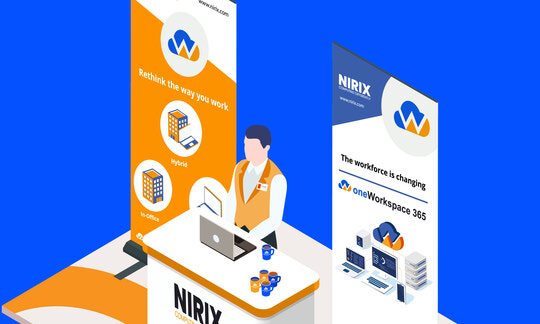Virtual Desktops vs. Virtual Machines – What Are the Differences Between Both?
|
By Steven Hsu • NIRIX Posted: Nov. 14, 2022, 2:58 PM MT |
| VDI leverages different components to present virtual desktops to users, and this aspect contrasts with traditional IT infrastructures where you would need to utilize physical and portable physical devices to access such resources. |
A virtual machine is a virtualized computing environment that functions as a traditional physical computer and has its own CPU, storage, memory, and network interface. Virtual desktops, on the other hand, leverage virtual machines to manage virtual desktops and applications, and both VDI and VM are terms that are used in the virtualization industry.
Virtual Desktops
This infrastructure hosts desktop environments on servers in a data center and deploys them to end-users whenever they are requested. It’s a technique in which you leverage virtual machines to manage and provision applications and virtual desktops, and you can access this infrastructure remotely from an endpoint. You would be able to access any applications and files, just as though they are running locally, and VDI would provide users with safe access to any corporate files and applications from pretty much any device.
VDI leverages different components to present virtual desktops to users, and this aspect contrasts with traditional IT infrastructures where you would need to utilize physical and portable physical devices to access such resources. Hypervisor, connection broker, load balancer, and client software are some of the components that VDI leverages to present virtual desktops to users. You can configure VDI as persistent or non-persistent, and this would depend on the user’s needs.
A lot of organizations gravitate towards Virtual desktops because it makes administration tasks a lot easier and enhances security. Additionally, it is highly scalable, enhances productivity, and saves people money, so it is very enticing.
Virtual Machines
A virtual machine behaves as though it is a physical computer and is essentially a file that can create a computer within a computer. It has its own memory, storage, and network interface, and you will need a hypervisor to emulate the physical hardware’s resources, including the processor and hard disk. A hypervisor would allow you to relocate between existing virtual machines or create new ones because it treats the physical hardware’s resources as a pool. The hypervisor also sandboxes the virtual machine from the rest of the system, so you would be able to run multiple virtual machines on the same physical hardware simultaneously with each running a different OS.
Every OS on a virtual machine would run exactly the same way as it would on host hardware, so the user's experience would be identical to the operating system running on a physical computer. Virtual machines are ideal environments for accessing virus-infected data, running disaster recovery, and creating backups.
If you need more information regarding these technologies, the experts at NIRIX can help. We will mobilize your entire workforce and will help you adapt to the demands of your clients and the threats of your competitors, both of which are constantly changing. Whether you need desktop as a service, virtual desktop, or DaaS, we can help, so if you’re ready to take your business to the next level, contact us today!
About the Author
![]()
|
|
President and CEO at NIRIX |
Steven Hsu is the founder of NIRIX. In 2001, Steven started NIRIX in the true HP sense – as a “one-man shop”, out of the basement of his home. Since 2001, with his personal business philosophy acting as his driving force, Steven has worked diligently over the decade in turning his vision into reality by recruiting talented people, developing new innovative product offerings, and delivering top-notch customer service.


